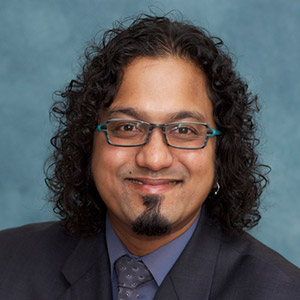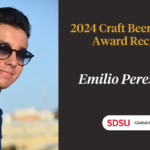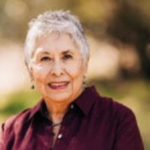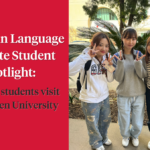 Vinod Sasidharan has vast knowledge in the recreation and tourism management area with an emphasis on sustainability. He is the founder and advisor of SDSU’s Sustainable Tourism Management program. His topic areas are ecotourism, sustainable tourism, grassroots tourism development, cultural tourism, global tourism trends, and cross-cultural studies of tourism and recreation behaviors. He is currently the president of the California Society of Park and Recreation Educators and is also on the board of directors of the Great Western Travel and Tourism Research Association.
Vinod Sasidharan has vast knowledge in the recreation and tourism management area with an emphasis on sustainability. He is the founder and advisor of SDSU’s Sustainable Tourism Management program. His topic areas are ecotourism, sustainable tourism, grassroots tourism development, cultural tourism, global tourism trends, and cross-cultural studies of tourism and recreation behaviors. He is currently the president of the California Society of Park and Recreation Educators and is also on the board of directors of the Great Western Travel and Tourism Research Association.
Why is the HTM program unique and how does it give an edge to professionals?
The HTM program is geared toward professional development – it has a clear set of courses that develop professionals in the area of leadership qualities. The program is a set of courses that accentuate leadership skills. Those leadership skills are reinforced through real-world applications. That is the edge to the HTM program.
It also delivers application through online content. It’s very nontraditional. Traditional courses focus purely on theory, so you apply that to real-world situations once you earn your master’s degree. In this program, professionals apply the knowledge while they are taking the courses, so that is the distinguishing feature between the SDSU HTM program and other programs.
Why do HTM professionals need to further their education?
Through higher education, HTM professionals have the option to get out of the organization mindset. They explore and are exposed to a cross-section of issues and challenges facing the industry today. Through exposure, they come up with different solutions beyond their current comfort zone. Through this variegated solution development process, they become effective and successful leaders.
What kinds of hands-on experience will a student gain in this program?
The focus is on real-world applications. The applications come through scenarios and case studies – projects that students conduct on their own, in their workspace, or another organization that they are interested in. In the course that I teach on sustainable development or green tourism, the focus is not just talking about going green, but looking at leadership qualities and skills that are needed to go green. For example, the ability to assess sustainability and the ability to come up with innovative sustainability solutions for organizations. They won’t use a preexisting model, but they have to create something organically for their individual organizations. The real-world applications are what are going to help the students the most. The online part is information delivery, and the real part is behind the scenes – students along with faculty guidance engage in projects that make sense and provide them with real results.
What are the benefits of a hybrid (online, on-campus) program?
For the folks who may not be familiar with this terminology, our program is a hybrid program meaning we begin with interactions between people and then move to the courses or modules that are online. We end the program where people come back together physically. The hybrid model allows professionals the convenience of a self-paced study, so it’s different from a traditional program. Traditional programs require you to be in a certain place at a certain time. In this day and age, it’s just not possible.
At the same time, the SDSU HTM program is well-known across campus for being innovative in the area of online teaching. When I say innovators, it’s not taking an online course and looking at a PowerPoint slide, but we use methodologies such as live classrooms, live interactions, and live instruction through different platforms that are available to us technologically to conduct programs. The classes are delivered by a set of professionals who are well-acquainted and well-known for their online technology teaching.
What are the program benefits since its open to students worldwide?
The hospitality and tourism industry is a global industry. It includes global consumers and the global economy. Now with this online program, it includes global professionals. I’ve been involved with international teaching and international students all my life, and it enhances business acumen and cross-cultural business skills. So, the impact of having a program that is available to students across the world is that people can develop long-term professional relationships personally and also acquire cross-cultural business skills.
What are the new trends in the HTM industry and how will this program address them?
Some of the trends we see today are changing consumer trends. The whole model of businesses providing services to consumers based on what business preferences are has completely changed around to consumers telling the businesses what kind of services they need. Technology is another trend in addition to the consumers having more voice and more say in product development and service development. Also, another trend is the idea of sustainability. Sustainability trends, going green, values, and corporate social responsibility are all trends that are here to stay. These will all be addressed in the program.
What are three adjectives that sum up this program?
Three adjectives that I would emphasize that separate or distinguish our program from other programs are that it is innovative, it is strategic, and that it is applied. Other programs are purely information delivery. Our program creates leaders who will leave the program not just thinking, “Oh I have just completed a master’s program and now I am ready to take on things.” They will be able to say, “Hey, I have done this before. Through this program, I came up with innovative solutions and strategies to change the course of business. I can apply what I learned because I have already done it.” This program is nontraditional but it’s also very experiential in nature.




